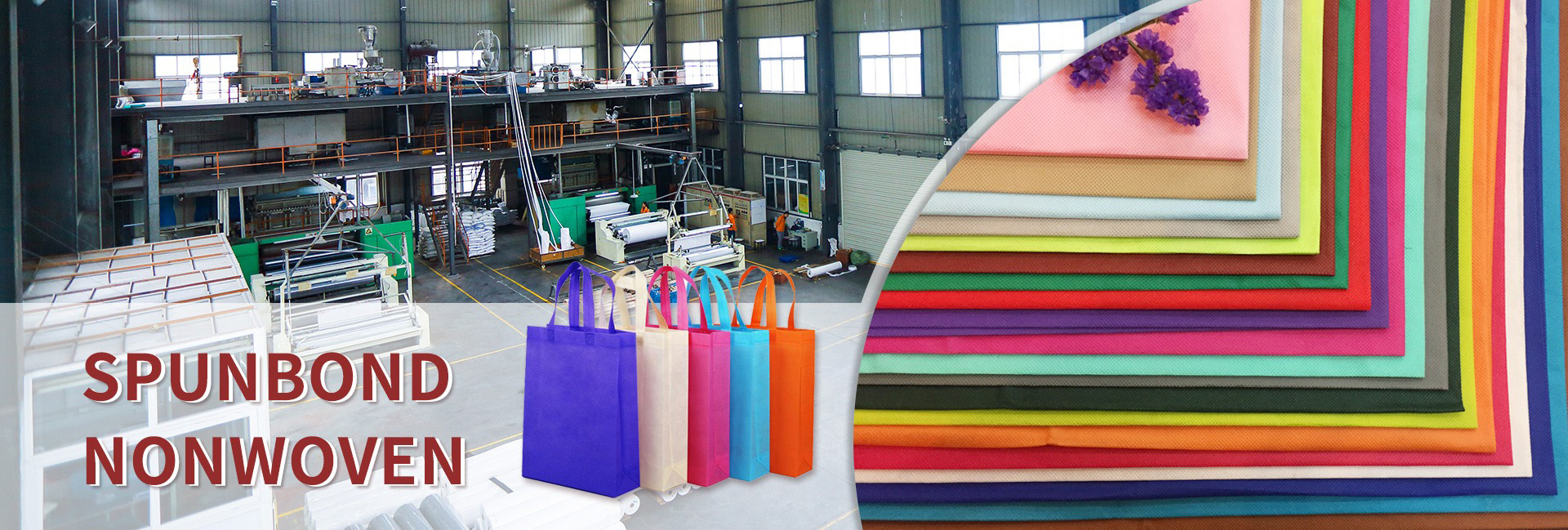Green healthcare is indeed an important development direction today, and the emergence of biodegradable PLA (polylactic acid) spunbond nonwoven fabrics provides new possibilities for reducing environmental pressure caused by medical waste.
Medical applications of PLAT spunbond fabric
PLA spunbond fabric has shown potential in multiple medical product fields due to its characteristics:
Protective equipment: PLA spunbond fabric can be used to make surgical gowns, surgical drapes, disinfectant bags, etc. The research also developed PLA based SMS (spunbond meltblown spunbond) structural materials, which can be used for medical protective equipment that requires high filtration efficiency.
Antibacterial products: By adding inorganic antibacterial agents such as nano zinc oxide (ZnO) to PLA, non-woven fabrics with long-lasting and safe antibacterial properties can be prepared. For example, when the ZnO content is 1.5%, the antibacterial rate against Escherichia coli and Staphylococcus aureus can reach over 98%. This type of product can be used in occasions with high antibacterial requirements, such as medical dressings, disposable bed sheets, etc.
Medical packaging and instrument liners: PLA non-woven fabric can be used for packaging bags of medical instruments. Its good breathability allows sterilization gases such as ethylene oxide to penetrate, while effectively blocking microorganisms. PLA nanofiber membrane can also be used for high-end filtration materials.
Environmental benefits and challenges
Significant environmental benefits: The use of PLA spunbond fabric helps reduce the consumption of petroleum resources by disposable medical products. After being discarded, it can be completely biodegraded under composting conditions, participate in natural circulation, and help reduce the environmental retention and “white pollution” of medical waste.
Challenges faced: The promotion of PLA spunbond fabric in the medical field still faces some challenges. For example, pure PLA materials have problems such as strong hydrophobicity, brittle texture, and need to improve heat resistance. However, these issues are gradually being addressed through material modification and process optimization. By preparing PLA copolymer fibers, their moisture absorption and heat resistance can be improved. Blending PLA with other biopolymers such as PHBV has also been proven to be an effective way to improve its mechanical properties and processability.
Future development direction
The future development of PLA spunbond fabric in the medical field may have the following trends:
Material modification continues to deepen: In the future, research will continue to optimize the properties of PLA spunbond fabric through copolymerization, blending, and adding additives (such as using chain extenders and antioxidants to improve the processability of PLA), such as improving its flexibility, breathability, and moisture permeability, to meet higher requirements for medical applications.
Industrial synergy and technology promotion: The further development of PLA spunbond fabric relies on the close integration of industry, academia, and research to promote breakthroughs in key technologies and the expansion of industrialization scale. This includes optimizing the melt spinnability of PLA copolyesters and developing industrial continuous production technologies for PLA based SMS structures.
Dual drive of policy support and market demand: With the release of “plastic ban plans” in Hainan and other regions, as well as the global emphasis on sustainable development and circular economy, relevant environmental policies will continue to create broad market space for biodegradable materials.
Summary
Degradable PLA spunbond fabric, with its advantages of green environmental protection, renewable raw materials, biodegradability, and functional potential, provides a new choice for the medical industry to reduce environmental burden and is expected to usher in the era of environmental protection for medical disposable products.
Although continuous improvement is still needed in material performance and cost control, with the advancement of technology, the maturity of the industry, and the promotion of environmental policies, the application prospects of PLA spunbond fabric in the medical field are very promising.
I hope the above information can help you better understand PLA spunbond fabric. If you have further interest in specific types of PLA medical products, such as high-end protective clothing or specific antibacterial dressings, we can continue to explore.
Dongguan Liansheng Non woven Technology Co., Ltd. was established in May 2020. It is a large-scale non-woven fabric production enterprise integrating research and development, production, and sales. It can produce various colors of PP spunbond non-woven fabrics with a width of less than 3.2 meters from 9 grams to 300 grams.
Post time: Nov-17-2025

